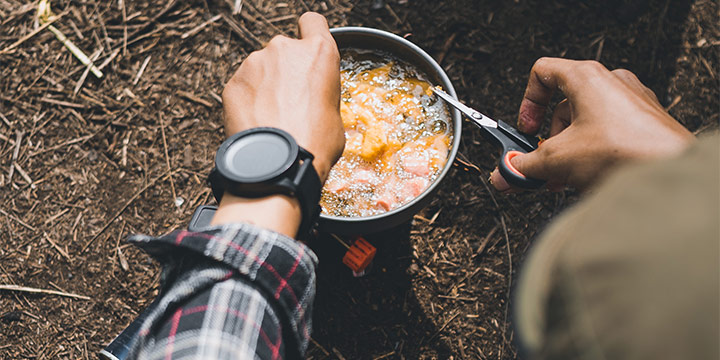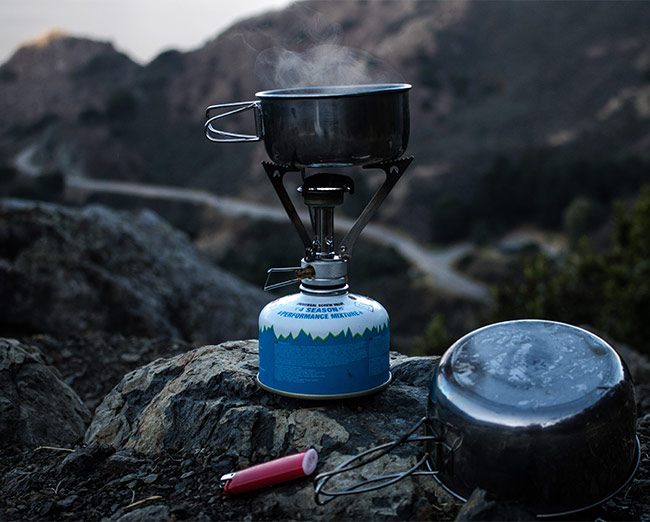Kayaking and Camping: Which gas stove is the best?
Kayak camping is not that different from backpacking. Much of the same stuff you would use for backpacking also works for kayak camping, but you don’t have to carry all the load on your back, so you can comfortably take, for example, a stove in your kayak.
This post is meant to provide some thoughts on how to use the gas stove on your kayak for camping.
The Benefits of a White Gas Stove
The best kayak camping stoves are small, compact, lightweight – and easy to fix on the shore or in the backcountry.
Most sea kayakers in North America will be well served by any one of the wide variety of white gas and butane stoves on the market, including those by MSR, Coleman and Eastern Mountain Sports.
Whisperlite is a good representative example. It comes from MSR, or Mountain Safety Research in Seattle, Washington.
Fuel
The Whisperlite, like all white gas stoves, burns fuel available at outdoors stores and outfitters like REI, EMS MEC, and any number of chain stores like K-Mart and Wal-Mart.
White gas is sold either under the brand name Coleman fuel – or just as generic white gas – in one-gallon containers. Generic white gas is just as good but much cheaper than branded fuel.
Fixability
The advantage of stoves like the MSR Whisperlite is not only that the fuel is inexpensive: the stoves are designed and manufactured with simplicity and easy fixability. They’re also durable, made from stainless steel, aluminum, and brass, and throw a lot of heat fast, even if the amount of heat is not all that easy to control.
With only a few moving parts and with a dis-assembly sequence that involves just a thumb screw here and there, white gas stoves are easy to repair in the field. You use a single multi-tool, supplied, to disassemble the stoves, clear clogs, and put them back together.
Shake for maintenance!
The current generation of white gas burning stoves incorporates a simple floating pin which, when you shake the stove, clears the burner and fuel line of soot and clogged fuel.
Maintenance for these stoves typically involves picking the stove up and shaking it until you hear its pin rattle. The rattle lets you know that the weighted pin moves forward and back, clearing the fuel jet of clogs and soot.
For clogs in the fuel line, you unscrew the fuel line with the supplied multi-tool and snake the braided fuel line cable back and forth in the fuel line a dozen times or so.
White gas stoves for kayak camping include five basic components: a priming cup, fuel jet, burner, fuel line and pump, sold as an all-in-one unit but replaceable as individual parts.
Extras to buy
The only part you’ll have to buy is an aluminum fuel bottle that attaches to the fuel pump.
One additional component you’ll need is a plastic base that does a good job of keeping the stove upright if you camp on the sand. The U-shaped stands come with clips that provide a solid base and rigid footprint for the stove to prevent its tipping over or sinking in the sand.
Most sea kayak campers will find that quality white gas stoves, which run under $100 these days, are usually sold as loss leaders by larger outdoors retailers who hope you’ll buy the stove and something else, like a tent.
One brand sea kayakers give excellent reviews of for reliability, durability, high heat and easy maintenance is the MSR Whisperlight Shaker Jet (Shaker Jet is a little pin inside the fuel line that cleans out the nozzle when the stove is shaken).
Just keep in mind that the product name Whisperlight is somewhat of a misnomer. Spark up this stove up after heating its priming cup, and anyone who grew near a jet airport will feel right at home. These small stoves emit a high-pitched loud to bring to mind the word jet in the brand name Shakerjet.
Loudness aside, these are remarkably hard-working compact stoves: the entire unit, fuel bottle included, fit easily into a bag the size of a toddler’s winter hat. Just the right size to stash into a day hatch.
Kayaking and Camping: Which gas stove is the best? Read More »


